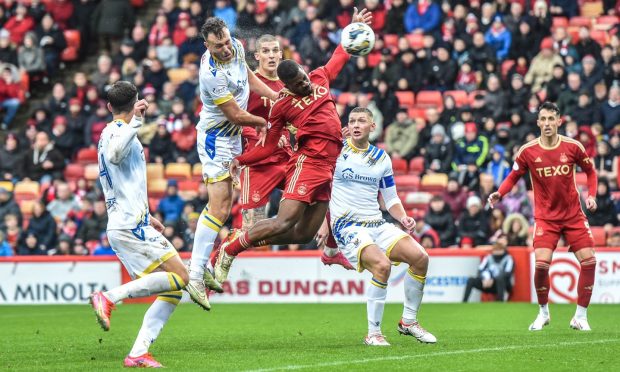Aberdeen hosted bottom-of-the-table St Johnstone at a soaking Pittodrie on Sunday, with referee David Munro the man in charge in tough conditions – and one offside incident defined the officiating team’s performance.
The match would finish in a boring 0-0 draw, with very few clear-cut chances across the piece.
There was, however, one major talking about at Pittodrie.
Just before half-time, the Dons thought they had taken the lead through an Andrew Considine own goal.
The ball was recycled back into the box following a corner, with former Reds and now-Saints defender Considine heading past his own keeper.
It looked like a good clean goal.
However, there was then a VAR review.
Kevin Clancy was the VAR official examining the goal, with an announcement over the tannoy revealing they were checking for a possible offside.
In a strange turn of events, referee Munro was sent to the monitor to review the offside. Something I don’t think I’ve ever seen.
And the goal was eventually ruled out – something which confused the fans and some of the players on the pitch.
Having seen a replay and the VAR offside lines, to me, Reds striker Duk is just offside during the incident where Considine heads into his own net. It is incredibly tight, though.
However, Duk never touched the ball. So why was the goal disallowed?
From a refereeing perspective, offside players can be penalised if they interfere with play. This comes in the form of blocking the goalkeeper’s vision, forcing a player to play the ball or intentionally moving towards the ball.
To be clear, you do not have to touch the ball to be considered offside, and to be penalised for being offside.
This is why the referee was sent to the monitor.
Munro wasn’t sent to monitor to decide if Duk had strayed offside – but to rule on whether he had interfered with play
VAR had established Duk was offside… but they wanted the referee to decide whether or not he had interfered with play.
I think the offside decision was the correct call.
If Duk wasn’t there, then Considine would have had a better chance to clear the ball, so the pressure from the Aberdeen striker was therefore a factor in the own goal.
To me, this was excellent refereeing and great teamwork from the VAR team and on-field officials to reach the correct decision.
I actually enjoyed seeing the referee make the final call by going to the monitor. There is more authority and legitimacy when it is the referee who has the final say.
Finlay Elder was a registered referee for six years and a category 5 official from 2019, with experience in the Highland League, Juniors and Club Academy.











Conversation